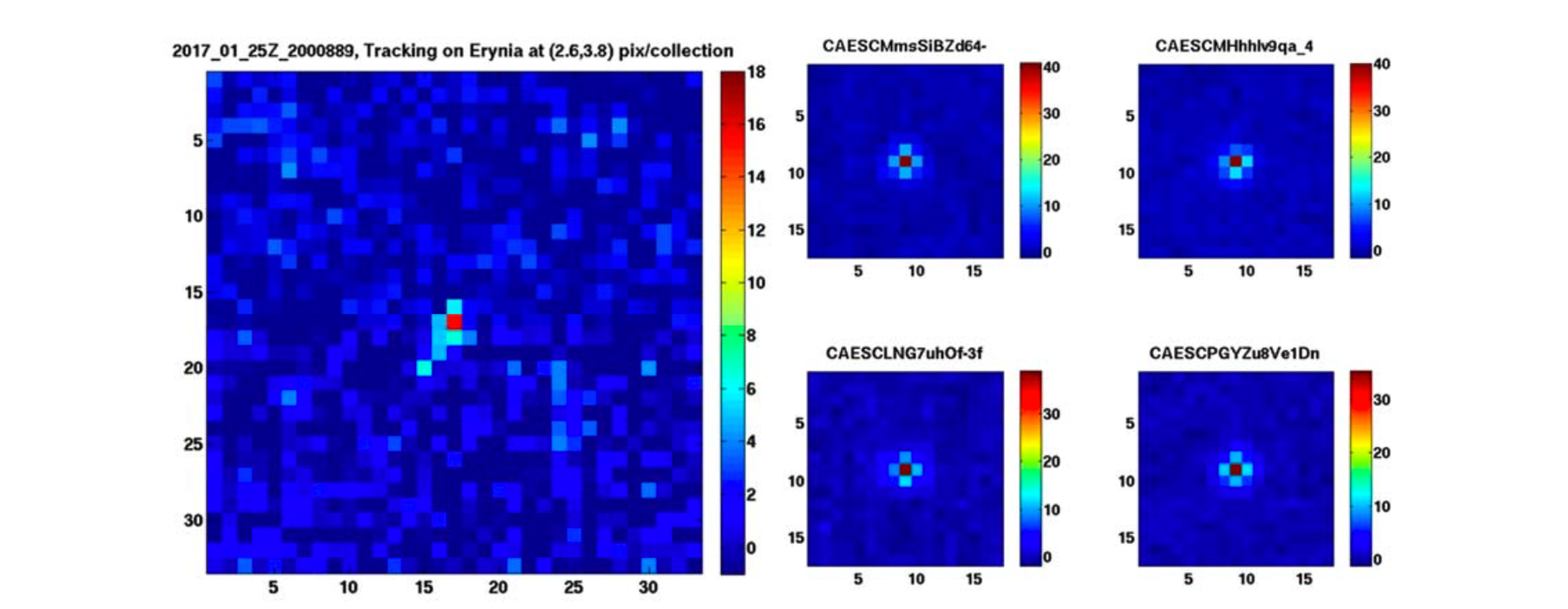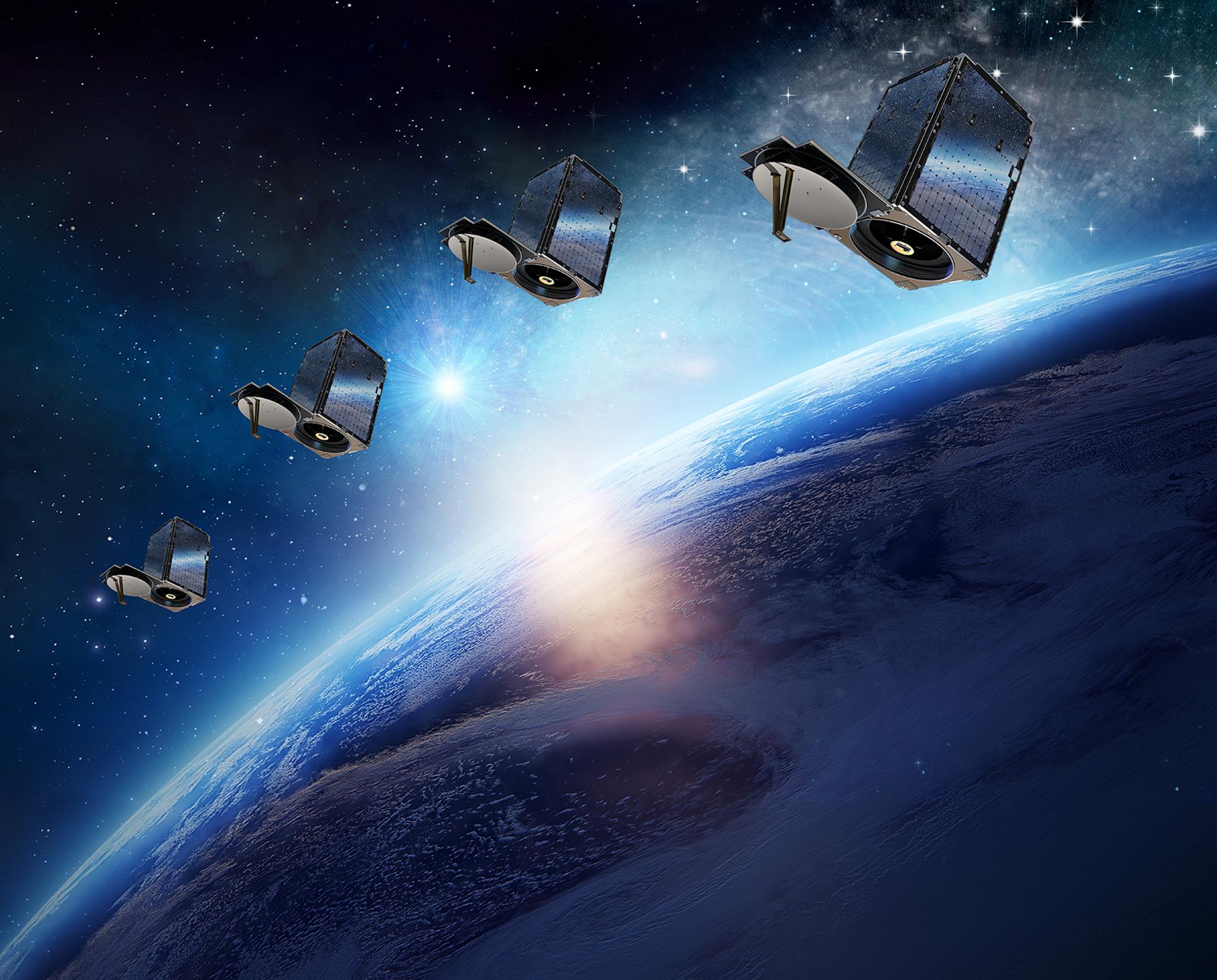SkySat-3 Demonstrates Asteroid Imaging
The proliferation of small satellites may make it easier to track near-Earth objects—asteroids and other potentially hazardous objects that could impact our Planet. In collaboration with Planet, Chengxing Zhai and team utilized SkySat-3 to demonstrate imaging of the main belt asteroid, 889 Erynia, and near-Earth oject 1998YP11. From January through April of 2017, SkySat-3 conducted asteroid observations while the spacecraft was in Earth's shadow. A considerable amount of post-processing was applied to isolate images of the asteroids. Background and incidental signals from cosmic rays were removed, individual observation frames were registered to offset jitter from the spacecraft's attitude determination and control systems, and then the resulting frames were "stacked" to create a single synthetic image. Erynia, with an apparent magnitude of 14.5, was detectable even in short, 3.3 second video observations. NEO 1998YP11, with a lower apparent magnitude of 16.1, required five orbital passes to complete a single synthetic image. The authors note that if the SkySat-3 hardware and camera settings were optimized for asteroid detection (rather than Earth imaging), objects with an apparent magnitude of 21.7 would potentially be detectable. Large, small satellite constellations could therefore be used to better characterize the risks posed by near-Earth objects. Read the full paper here. [caption id="attachment_139333" align="alignnone" width="1808"]


Ready to Get Started
Connect with a member of our Sales team. We'll help you find the right products and pricing for your needs


